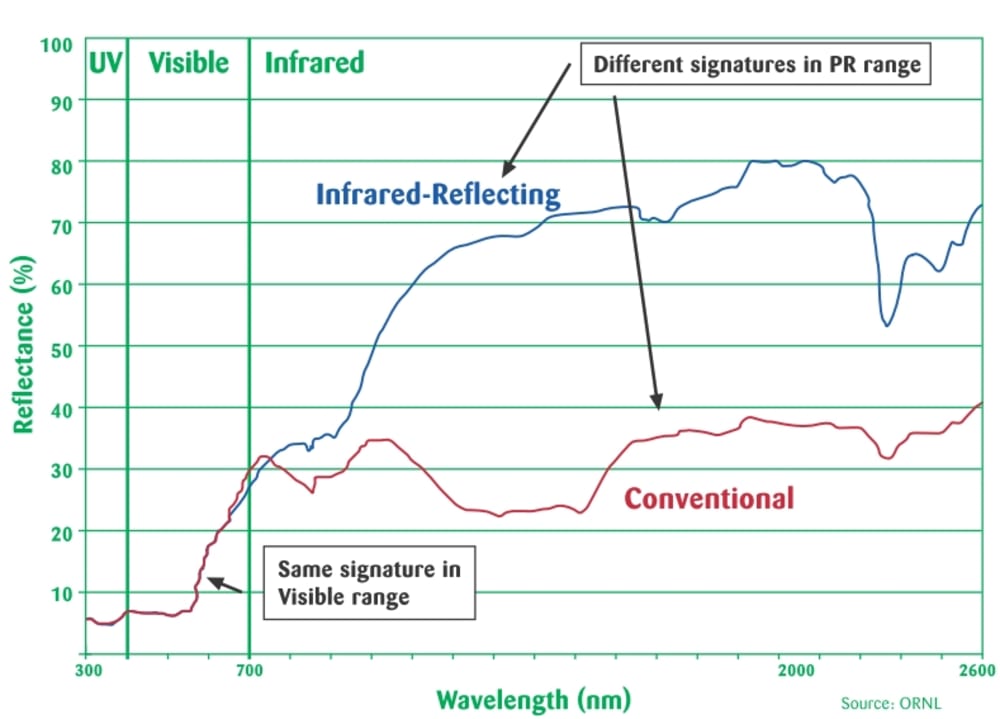1-Heat transfer mechanism through a roof
On a summer sunny day, a typical roof surface can reach temperatures that are nearly 100°F above ambient temperature. A light color roof, due to the characteristics of the outer layer, stays at or near the ambient temperature. The benefit of keeping a roof surface cooler is air-conditioning energy saving, reduced summer electrical energy usage, increased human comfort and urban environment quality.
For low-rise buildings a typical application achieves air-conditioning energy savings of 10-20%.
This translates into monetary gains for building facility owners, helping reduce emissions of atmospheric pollutants and green house gases.
Much of solar radiation is reflected back toward the sky, but some is absorbed by the roof as heat. A portion of the retained heat will be emitted back to the sky in the form of infrared radiation. Some heat is also carried away from the roof surface through convection. The remaining heat flows through the roof. The amount of heat that reaches the conditioned space below the roof will be determined by the insulating property of the roof material and on the difference in temperatures on either side of the roof.
A white roof has a higher thermal emitting than a dark colored roof. Solar reflectance and thermal emitting of a white roof combine to keep the roof surface much cooler than a traditional roof with temperature reductions of 35-65°F.
2- Solar reflectance effect
Solar reflectance is the fraction of the incident solar energy that is reflected by the surface material. Solar energy consists of a spectrum of wavelengths, including ultraviolet, visible and infrared light. The solar energy distribution as a function of wavelength is shown in the illustration. Surface materials that reflect solar energy over all wavelengths will have better performance in reducing roof solar heat gain.
Color is a good indicator of solar reflectance only in the visible light range with reflectance typically increasing from dark-colored to a light-colored surface. Traditional dark-colored roofing materials have a solar reflectance of about 0.04-0.18 whereas light-colored roof surfaces have a reflectivity of 0.70 or higher.
3- Solution for changing roof color to white or lighter colors
The color of a clear paint can be changed by mixing of thermo-chromic dyes in its composition, to a white reflective color. Thermal paints use pigments that activate the color, for example when roof temperature is reaching 70°F, a clear paint becomes white if mixed with fluorine polymer resins. A dark color roof changes the color only when painted with this thermal paint and the surface temperature reaches 70°F. and gets back to the original color when below this threshold.
An urbanized area can be about 2-19°F hotter than the surrounding rural area.
Increasing the solar reflectance of roofs transfers less heat to the ambient environment, lowers outdoor air temperature and can slow urban smog formation. Also for commercial buildings, mechanical air-conditioning equipment can be downsized, which will minimize up-front capital cost for building owners to purchase air-conditioning and comply with energy efficiency standards.
Like this entry?
-
About the Entrant
- Name:Peter Voin
- Type of entry:individual
- Patent status:none





